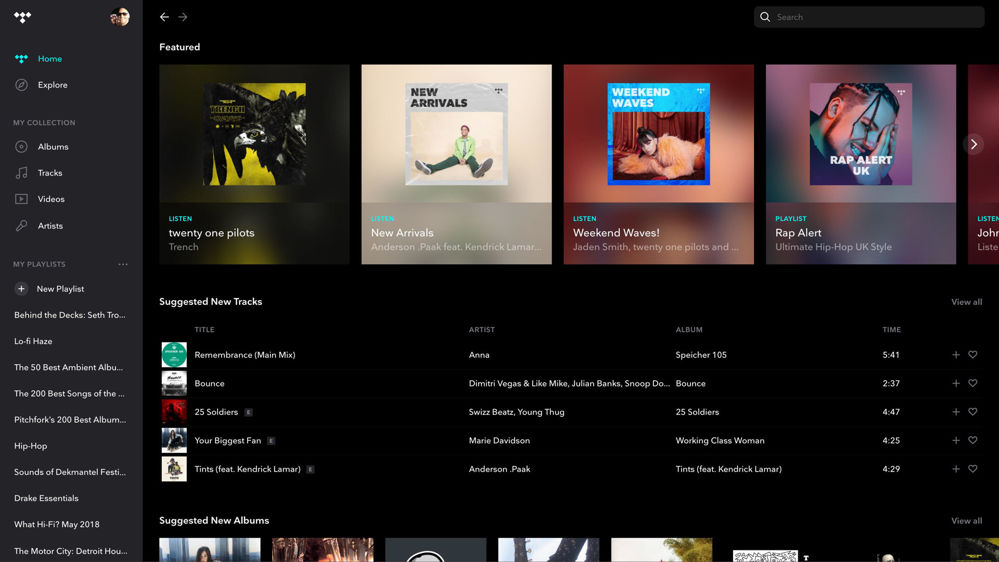Audio enthusiasts are music addicts that are relentlessly driven to continually pursue a purer, more satisfying high. They connect with the instruments, lyrics, and vocals on an emotional and tangible level, truly feeling the music and valuing the transcendental experience that only music can bring. But no matter how gratifying their current sound might be, they want to connect in a deeper, more passionate, and more emotionally charged manner. For the majority, the CD audio quality level has been viewed as the target standard for maximum appreciation. However, high resolution audio, sometimes referred to as HD audio, can heighten and enrich the experience even further. To truly get this higher high, you need to understand the fundamentals of high-res audio, the formats that can deliver it, and the audio components required for playback.
High-res audio was once reserved for the rarefied few who were privileged enough to either work in a studio or possess the finest and most expensive electronics. The unyielding demand of tenacious music lovers spurred the development of much more affordable components and readily available media. Now many smartphones even possess the ability to convey high-res audio, and a selection of online sites make the media easily accessible. Getting high (res) is easier and more available than ever before.
While there’s no universal criterion to define hi-res audio, multiple electronic and recording associations define it as “lossless audio that is capable of reproducing the full range of sound from recordings that have been mastered from better than CD quality music sources". In quantified terms, high-res audio refers to music files that have greater bit depth and higher sampling frequency than the average CD, which is 16-bit/44.1kHz.
Such a specification doesn’t allow an appreciation of the superiority of high-res unless the particulars are understood. Bit depth is the number of bits of information in each sample, and it indicates how detailed each sample is. Sampling frequency indicates the number of times samples are taken of the signal per second, during the analog-to-digital conversion process. The more bits there are, the more accurately the signal can be measured. Hi-res audio files generally use a sampling frequency of 96kHz or 192kHz, which is much higher than the CD format. This means that high-res digital files are a much more accurate representation of the analog signal originally captured during the recording process, compared to the CD format.

To better understand how this makes music sound better, imagine the bits and sampling rate as mosaic tiles being used to create an image. A good number of mosaic tiles can convey a good amount of detail towards creating a desired image. However, a substantial amount more can go a long way to greatly clarify the artistic intention. High resolution audio is not a blatant night and day difference to basic audio, but it undoubtedly improves the subtleties, nuances, smoothness, and authentic detail, making it more faithful to the artist’s intention. It is more effective at creating that unquantifiable connection music lovers seek because of its more lifelike sound, spatial presentation, and ethereal impression.
Hi-res Audio Formats
Hi-res audio content is available in a variety of formats with differences that include sampling rates, meta data availability, and operating system compatibility. Therefore, it’s quite important to understand the basic differences to ensure you choose the appropriate format for your tastes and source. The following is an overview of the more popular hi-res formats:
WAV: This is the standard CDs encoding. Good sound quality but a large file because it’s uncompressed, and generally doesn’t include metadata.
AIFF: Apple's WAV equivalent with better metadata support.
FLAC: This format supports hi-res sample rates, takes up about half the space of WAV, and stores metadata. It's widely considered the preferred format for downloading and storing hi-res music.
ALAC: Apple's FLAC equivalent.
DSD: The format used for Super Audio CDs. Processes the audio signal as a stream of single bits as opposed to multi-bit portions. It comes in a few varieties for varying levels of high resolution and provides sensational sound but isn't widely supported.
MQA (Master Quality Authenticated): A lossless compression format that efficiently packages hi-res files so they’re easily streamed.
Dolby Atmos Music: More of an effect than a format, this is music that uses Dolby’s object-based surround sound to make it seem as though different instruments and effects are coming at you from all angles.

Hi-res Audio Streaming Service and Download Sites
Unless you’re kickin’ it old school with the remarkably resurgent vinyl, your current music consumption likely comes through downloading or streaming. Hi-res audio is accessible in this manner as well, although not through every streaming service. Be aware that hi-res tracks generally represent a small fraction of what a streaming music service offers. So, you must determine if upgrading to a service's hi-res audio tier is worth the money. Tidal is a popular choice among connoisseurs, has a partnership with MQA, and offers exclusive backstage content, live streams, and concerts. Qobuz has a huge catalog, perhaps the reason why it markets itself as the home for true music fans. Amazon is involved in seemingly every market, and Amazon Music Unlimited is constantly growing their catalog. They used to have an additional charge for their hi-res content, until Apple got into the game with Apple Spatial Audio with Dolby Atmos. The juggernaut known as Spotify is rumored to have a hi-res platform coming soon.
Most streaming services that offer hi-res audio don’t offer hi-res downloads, with Qobuz being an exception. Therefore, if you want to build your own personal hi-res library, there are other sites to consider. Acoustic Sounds Super HiRez has been in the hi-res game longer than anyone and offers one of the most comprehensive libraries available. ProStudio Masters offers only high-resolution digital masters that are directly received from labels and is divided into helpful categories like top sellers and latest releases. HDtracks is one of the more established hi-res download stores, and it's never been stronger. HDtracks originally specialized in jazz, classical, and older rock but realized their clientele was dying out and now includes fresher, current artists as well.
Now that you understand the technology, appreciate the benefits and know where to get material, you’re close to your musical nirvana. The final stage is securing audio components capable of streaming or playing hi-res audio. The streaming or playback source must have a DAC (digital-to-analog converter) capable of processing hi-res audio files. Most modern computers and Blu-ray players will be suitably equipped but phones, the preferred source of the masses, are a lot more hit and miss. Many are starting to integrate some form of hi-res audio support, both in software and hardware via a compatible DAC, but the majority are ill-equipped.
Always keep in mind that an audio system is only as good as its weakest link, and this is even more true when it comes to appreciating the finer distinctions of hi-res audio. The quality of the source, DAC, and headphones or speakers all play equally critical roles. Just because your laptop or pricey source can play hi-res doesn’t mean it can do it adequately enough for you to appreciate the difference. If it can, but the presentation from the headphones or speakers is not up to the task, then once again the result will be found wanting. There is a growing market for dedicated hi-res music players and DACs that ensure the enrapturing experience when paired to superior components. They’re not necessarily bank account breakers either, just don’t expect to get that previously unattainable music induced high from the headphones that were included with your phone.
It’s not easy being an audio addict and perpetually striving for a higher level of musical gratification. Hi-res audio offers this bliss and there are just a few simple steps on the stairway to heaven to follow. Fortify your system so it’s capable of streaming or playing back hi-res. Acquire the suitable media. Ensure the speakers or headphones are sophisticated enough to deliver the purer, richer, and vibrant detail. Finally, prepare yourself to dive deeply into the most enchanting, mesmerizing, and addictive listening experience. Just don’t call us pushers for guiding you there!

